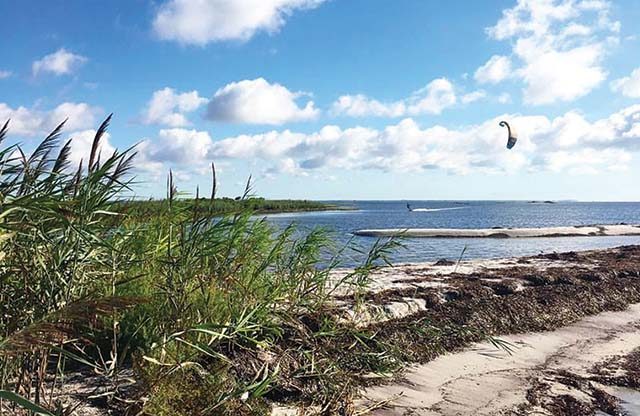We have survived the doldrums of summer and that fresh breeze from the north is on its way. Whether you are already an avid kiteboarder or have just been dabbling with the idea of learning. I am going to share with you some ideas that will help you get the most out of this windy season.
For those of you who have been entertaining the idea of getting started with this sport, now is the time! I recommend starting with a half day intro course followed by the purchase of a trainer kite to fine tune your skills. Learning to kiteboard is not an overnight journey. Getting started now will ensure you a long enjoyable season to feed your newly discovered kiteboarding addiction. Some choose to start with a trainer kite and dabble in the sport before taking a lesson. If this is the approach you take, I recommend getting a two- to three-meter trainer kite. Make sure to follow the specific directions and start out in very light wind. Even though the trainer kites are small they can still pull very hard and have led to many series injuries. This is why I recommend taking a lesson before flying any traction kite for the first time.
If you are an avid kiter with your own equipment, I recommend starting with the following to insure your equipment is in good order. The number one thing that fails on a kite is the inflation valves and seems. The heat of summer can be detrimental to the glue that holds the valves on and the seams together. If you have left your kite in a hot car or in your garage there is a moderate chance that you may have some issues. To make sure you are in good order, pump your kite to the appropriate pressure (around seven-psi) and let it sit for a couple of hours. If everything is in good order, you should not lose any pressure. Next check for separation around the valves, as well as the actual sewn seems around the leading edge material. If you see any separation, you will want to address it, as it may only be a few sessions before you have an issue and lose out on good conditions due to equipment failure.
The next thing to check is the condition of your lines. Lay them out and check to make sure they are all of equal length or as specified by the manufacture. A few millimeters out of tune can really change the flying characteristics of the kite. If they are a little out of tune, you can typically stretch them back to equal lengths by carefully connecting them to a sound structure and stretching them back in to tune. Be careful because if something snaps you will be sent flying backwards. Although it will make for a great YouTube video, you could get seriously hurt, so use a spotter when pulling with all of your weight. I speak from experience!
It’s easy to forget the power of the wind when you have not seen much of it for three months. Be sure to give your equipment and safety systems a thorough inspection. If you have any concerns or questions, please feel free to contact me through my website NewWaveKiteboarding.com. Have a great season and I hope to see you on the water soon!
[easy-social-share]





